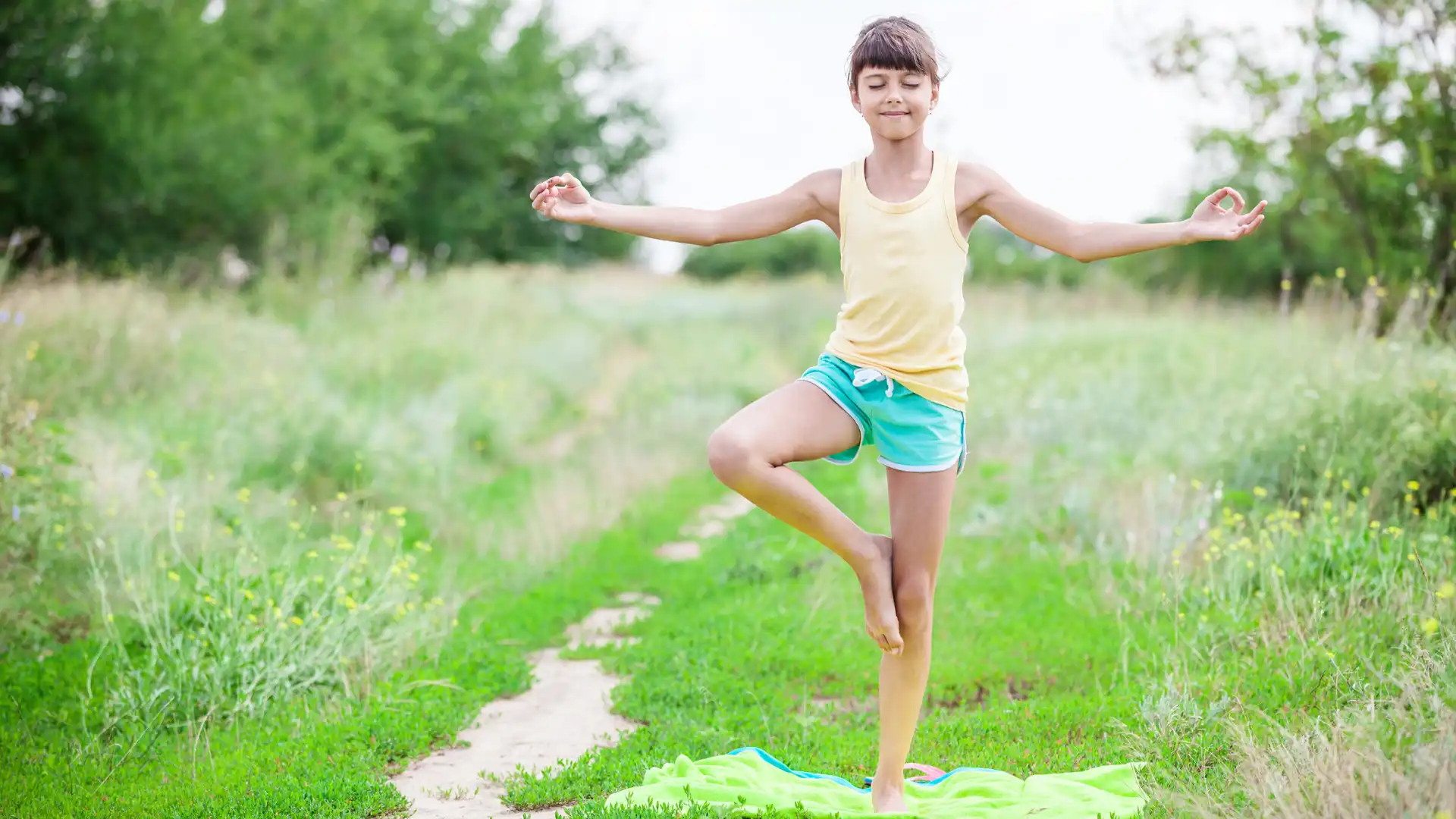Simple and Fun: 4 Tips for Teaching Yoga to Kids

The benefits of yoga have been well documented in scientific literature (1) and the mass media, from improving sleep to aiding physical development. Therefore, it’s not so surprising that many parents and schools have been encouraging their children to actively partake in yoga classes from a young age.
The main advantage of teaching kids is that they are naturally curious and full of energy, so practicing yoga with them is certainly a fun experience for all involved, but that doesn’t mean yoga is a one-size-fits-all practice by any means.
In fact, it’s important to remember that your usual yoga class for adults is very unlikely to be a roaring success for younger pupils. Yoga for kids can indeed work very well, but you need to remember to cater to their unique needs.
Here are some of the best tips for teaching children’s yoga.
Start Simply
You may begin with a seated posture in your adult yoga class, but that’s probably not going to go down well with kids. Instead, start off simply with an engaging warm-up where you have the kids get rid of some of that initial excited energy.
A great way to achieve this is with your typical warm-up exercises, or even by telling traditional stories about famous yogis that include many yogic values. Some instructors even find that mantras work well to begin the class and tie in very well with many of the traditional principles.
Some instructors also find that organizing their class into teams of two is also beneficial since it helps to foster good team skills and encourages interaction, which can help keep the class engaging for young minds. A back-to-back position is often the easiest to adapt for yoga class and helps kids better concentrate on the yoga practice.
Make it Child-Friendly
Although it’s sometimes easy to forget, it’s true that unlike adults, children don’t always want to be taught yoga and in many cases have had no say in the matter at all. Kids may have been instructed to attend by parents, or a schoolteacher, so it’s vital you understand that they are probably not going to be as naturally attentive as adults who have elected to be there from the very beginning.
As a result, try your best to make the class as fun and engaging as possible. A great way to do this is to turn different postures or asanas into a story, as this will allow them to utilize their imaginations and help prevent their minds from wandering off.
One way to help engage them is to suggest that they think about different objects and have them act them out. For example, ask them to think about a tree, and have them “act like a tree” in Vrksasana (Tree Pose).
Getting kids to concentrate on their breath instead of the other distractions around them is another effective way to keep them focused on yoga. Kids also often enjoy chanting, mudras and even mantras, as they allow them to get into the mood and completely focus themselves on the practice.
Keep it Fun
Encouraging kids to excel at yoga requires persistence and the right attitude. It’s tempting to become preachy and constantly tell kids about the many benefits of practicing yoga, but this tactic is unlikely to motivate them. In fact, even though the purpose of promoting the merits of yoga obviously has good intentions, this tactic can often make kids feel like they are in a pressurized environment.
The best approach is to remain supportive, lead your class by example and be an effective role model. Through seeing your optimistic outlook and the health benefits it has clearly had for you, kids and teens are much more likely to respond in a positive way.
Structure and routine often work very well for adult classes, but this isn’t always the case for youngsters. Kids enjoy being creative, exploring their imaginations and ultimately having fun. Therefore, when teaching kids try to remain flexible in your teaching and when appropriate, adapt to their playful and inquisitive natures. 
This doesn’t mean abandoning your entire lesson plan, it just means realizing that there are many routes to achieving success and as long as the kids are learning you are making progress, and that’s the ultimate goal.
Establish Yoga Class Rules and Follow Through
Even though it’s important to remember that yoga class is ultimately a relaxed environment, in the name of productivity and safety, basic rules are essential for the sake of all yoga practitioners taking part. Therefore when teaching yoga to kids, it’s important to establish some basic ground rules.
Rules are essential in any type of learning environment as they help keep everyone safe and maintain a productive learning process free from constant distractions. Therefore, it’s important to establish a set of rules and explain to children what the consequences for breaking them will be.
Young children and preschoolers often respond very well to basic commands, so simply asking your class to look and listen are a great way to maintain their attention and participation.
If you notice them beginning to get distracted, simply say something like “look and listen to what I am doing” and as you do make sure you perform an engaging posture and ask them to follow along. Remember that you’re probably going to have to repeat yourself, but it’s important to maintain a positive and encouraging tone.
Highlighting why rules are important is also useful, sharing stories about accidents may not always seem appropriate but by explaining what could happen if someone does not stay on their mat is often a great way to get kids to understand the importance of following rules.
Remember that if kids don’t abide by the class rules and continue to ignore you, then it’s okay to follow through with the consequences. Often requesting a disobedient child to sit and watch for a while does the job until they are ready to follow the rules and have another go.
Study pelvic floor health with Leslie Howard and YogaUOnline: Surprising Truths about Pelvic Floor Disorders – And How Yoga Can Help.
Guest Author Bio
 Jennifer McLean is a mother of three, housewife and full-time blogger whose ramblings and research can be read on her blog and passion project MomBible.com. Jennifer writes about a wide range of parenting topics including health, education, behavior, spirituality, and even product reviews.
Jennifer McLean is a mother of three, housewife and full-time blogger whose ramblings and research can be read on her blog and passion project MomBible.com. Jennifer writes about a wide range of parenting topics including health, education, behavior, spirituality, and even product reviews.
Resources
1. Hagen, I., & Nayar, U. S. (2014). Yoga for Children and Young People’s Mental Health and Well-Being: Research Review and Reflections on the Mental Health Potentials of Yoga. Frontiers in Psychiatry, 5, 35. http://doi.org/10.3389/fpsyt.2014.00035



